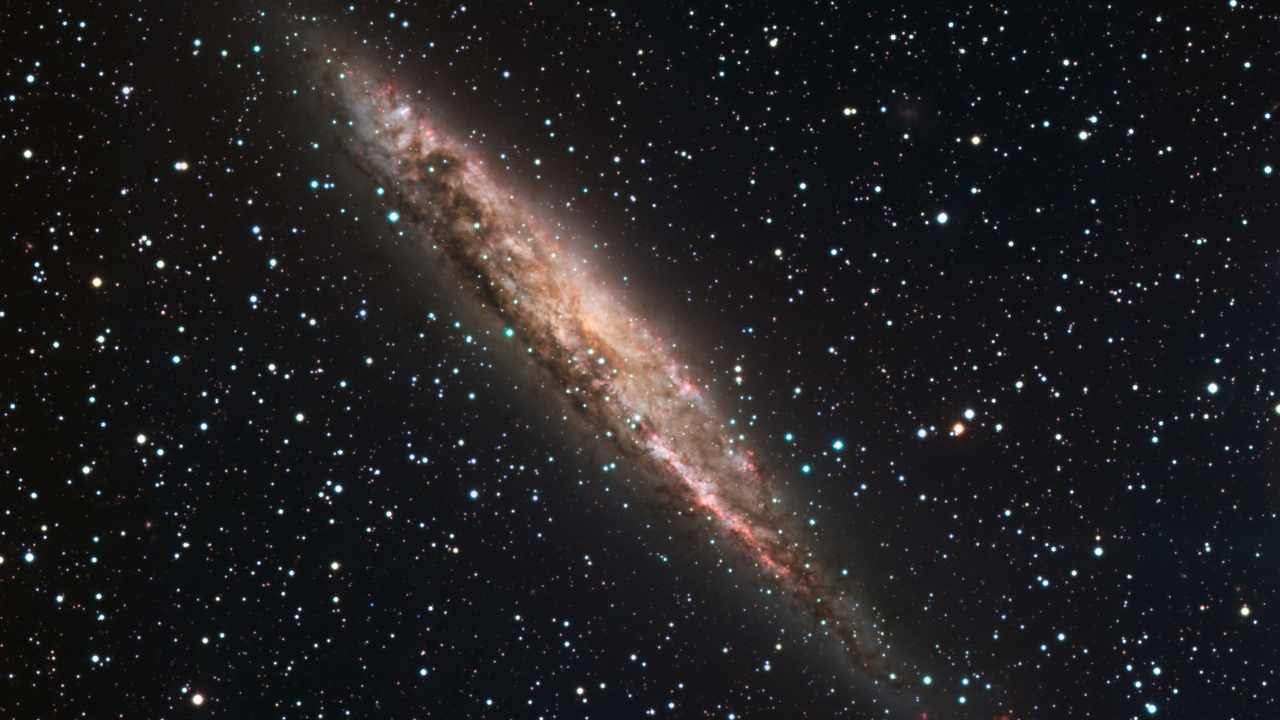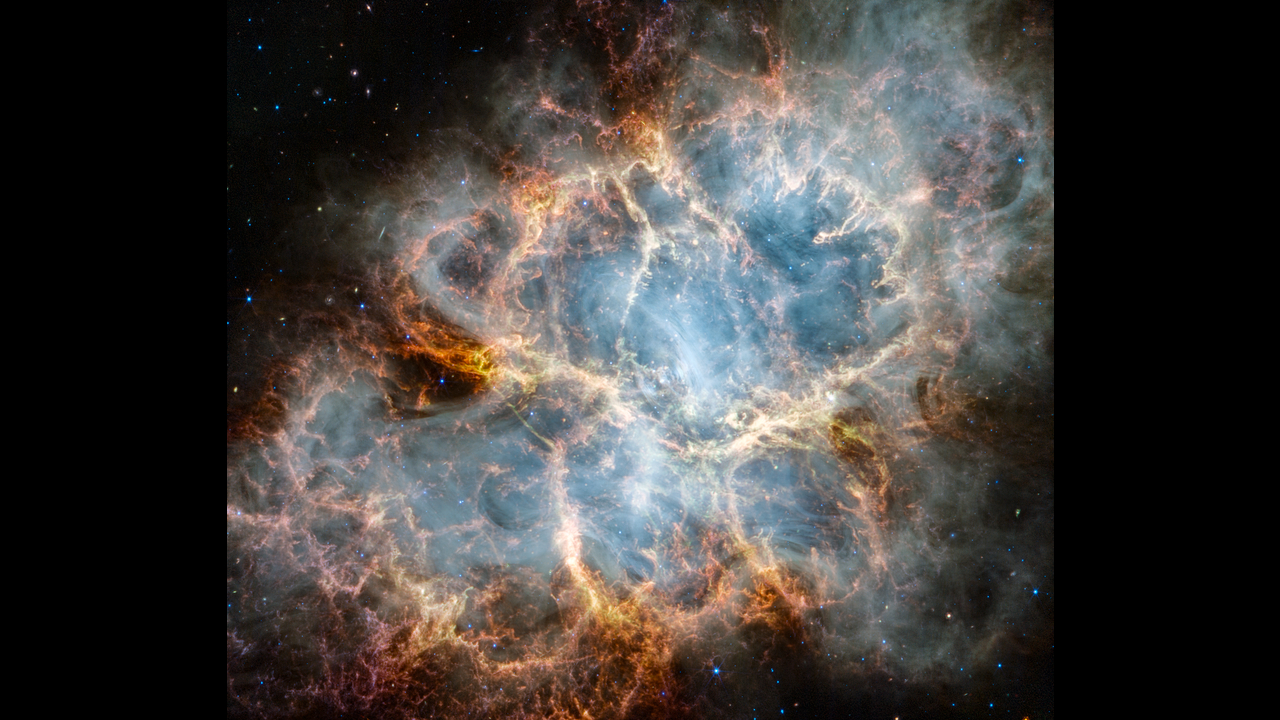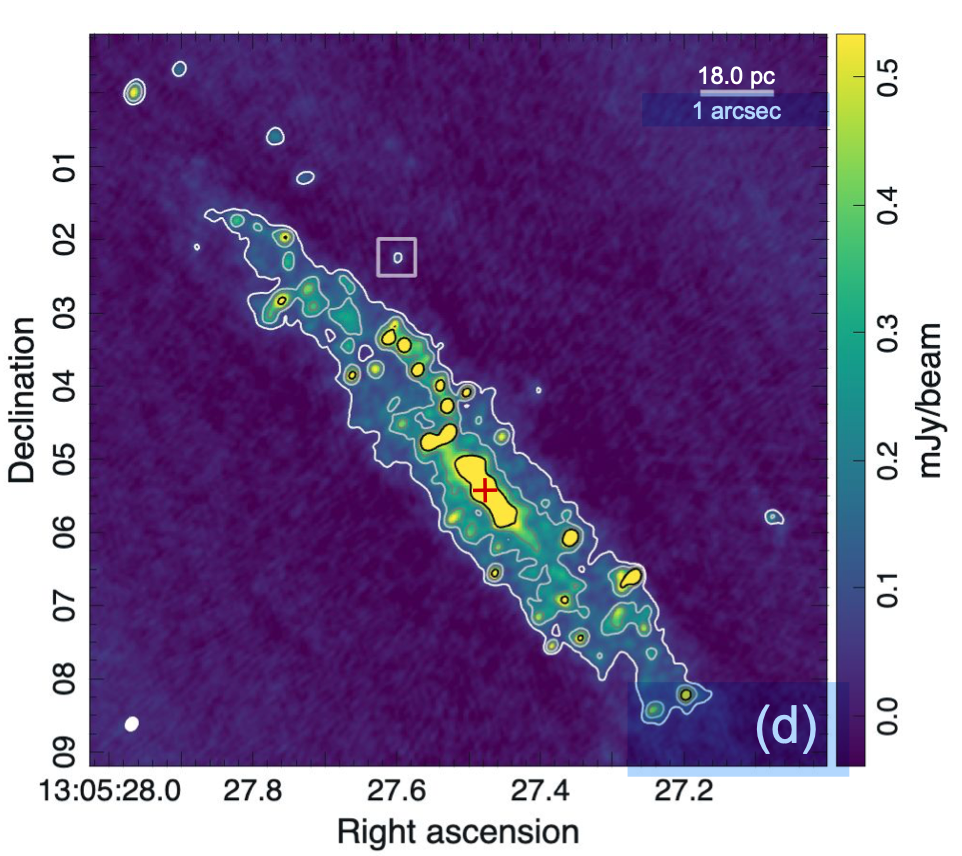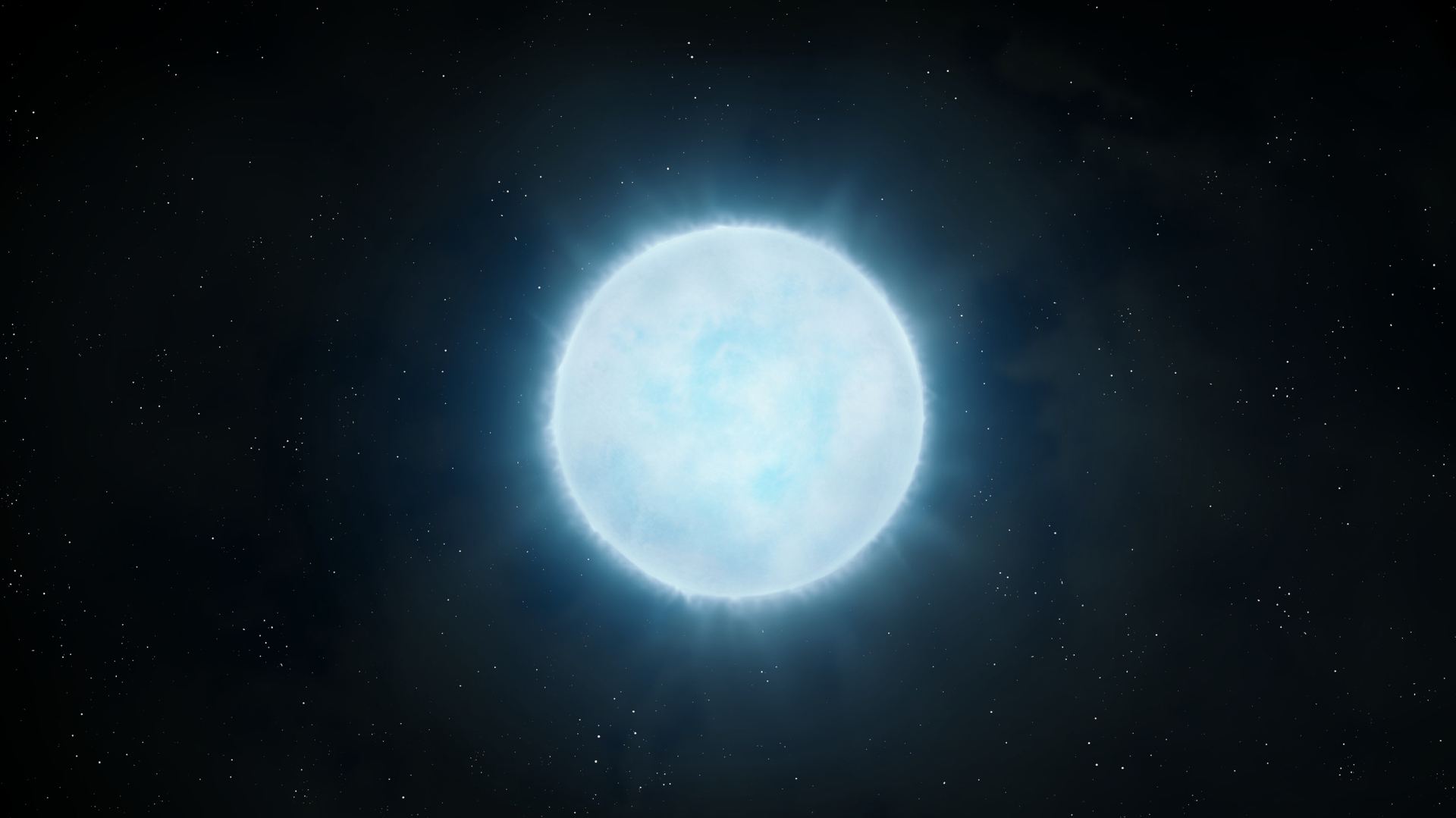Scientists may have found a powerful new space object: 'It doesn't fit comfortably into any known category'
"When you put it into context, Punctum is astonishingly bright."

A bewilderingly powerful mystery object found in a nearby galaxy and only visible so far in millimeter radio wavelengths could be a brand new astrophysical object unlike anything astronomers have seen before.
The object has been named 'Punctum,' derived from the Latin pūnctum meaning "point" or
"dot," by a team of astronomers led by Elena Shablovinskaia of the Instituto de Estudios Astrofísicos at the Universidad Diego Portales in Chile. Shablovinskaia discovered it using ALMA, the Atacama Large Millimeter/submillimeter Array.
"Outside of the realm of supermassive black holes, Punctum is genuinely powerful,” Shablovinskaia told Space.com.
Astronomers don't know what it is yet — only that it is compact, has a surprisingly structured magnetic field, and, at its heart, is an object radiating intense amounts of energy.
"When you put it into context, Punctum is astonishingly bright — 10,000 to 100,000 times more luminous than typical magnetars, around 100 times brighter than microquasars, and 10 to 100 times brighter than nearly every known supernova, with only the Crab Nebula surpassing it among star-related sources in our galaxy," Shablovinskaia said.
Punctum is located in the active galaxy NGC 4945, which is a fairly close neighbor of our Milky Way galaxy, located 11 million light-years away. That's just beyond the confines of the Local Group. Yet, despite this proximity, it cannot be seen in optical or X-ray light but rather only millimeter radio wavelengths. This has only deepened the mystery, although the James Webb Space Telescope (JWST) has yet to take a look at the object in near- and mid-infrared wavelengths.
What could Punctum be?
Its brightness remained the same over several observations performed in 2023, meaning it is not a flare or some other kind of transitory phenomenon. Millimeter-wave radiation typically comes from cold objects such as young protoplanetary disks and interstellar molecular clouds. However, very energetic phenomena such as quasars and pulsars can also produce radio waves through synchrotron radiation, wherein charged particles moving at close to the speed of light spiral around magnetic field lines and radiate radio waves.
Breaking space news, the latest updates on rocket launches, skywatching events and more!
What we do know about Punctum is that based on how strongly polarized its millimeter light is, it must possess a highly structured magnetic field. And so, Shablovinskaia believes what we are seeing from Punctum is synchrotron radiation. Objects with strong polarization tend to be compact objects, because larger objects have messy magnetic fields that wash out any polarization.
Perhaps that synchrotron radiation is being powered by a magnetar, the team believes, which is a highly magnetic pulsar. However, while a magnetar's ordered magnetic field fits the bill, magnetars (and regular pulsars for that matter) are much fainter at millimeter wavelengths than Punctum is.
Supernova remnants such as the Crab Nebula, which is the messy innards blasted into space of a star that exploded in 1054AD, are bright at millimeter wavelengths. The trouble is that supernova remnants are quite large — the Crab Nebula itself is about 11 light-years across — whereas Punctum is clearly a much smaller, compact object.

"At the moment, Punctum truly stands apart — it doesn't fit comfortably into any known category," said Shablovinskaia. "And honestly, nothing like this has appeared in any previous millimeter surveys, largely because, until recently, we didn't have anything as sensitive and high-resolution as ALMA."
There is the caveat that Punctum could just be an outlier: an extreme version of an otherwise familiar object, such as a magnetar in an unusual environment, or a supernova remnant interacting with dense material. For now, though, these are just guesses lacking supporting evidence. It is quite possible that Punctum is indeed the first of a new kind of astrophysical object that we haven't seen before simply because only ALMA can detect them.
In the case of Punctum, it is 100 times fainter than NGC 4945's active nucleus that is being energized by a supermassive black hole feeding on infalling matter. Punctum probably wouldn't have been noticed at all in the ALMA data if it wasn't for its exceptionally strong polarization.
Further observations with ALMA will certainly help shed more light on what kind of object Punctum is. The observations that discovered Punctum were actually focused on NGC 4945's bright active core; it was just happenstance that Punctum was noticed in the field of view. Future ALMA observations targeting Punctum instead would be able to go to much lower noise levels without worrying about the galaxy's bright core being over-exposed, and it could also be observed across different frequencies.
The greatest help could potentially come from the JWST. If it can see an infrared counterpart, then its greater resolution could help identify what Punctum is.
"JWST's sharp resolution and broad spectral range might help reveal whether Punctum's emission is purely synchrotron or involves dust or emission lines," said Shablovinskaia.
For now, it's all ifs and buts, and all we can say for sure is that astronomers have a genuine mystery on their hands that has so far left them feeling flummoxed.
"In any case," concluded Shablovinskaia, "Punctum is showing us that there is still a lot to discover in the millimeter sky.”
A paper describing the discovery of Punctum has been accepted by the journal Astronomy & Astrophysics, and a pre-print is available on astro.ph.

Keith Cooper is a freelance science journalist and editor in the United Kingdom, and has a degree in physics and astrophysics from the University of Manchester. He's the author of "The Contact Paradox: Challenging Our Assumptions in the Search for Extraterrestrial Intelligence" (Bloomsbury Sigma, 2020) and has written articles on astronomy, space, physics and astrobiology for a multitude of magazines and websites.
You must confirm your public display name before commenting
Please logout and then login again, you will then be prompted to enter your display name.

